Xuewen Liao
Distributed Noncoherent Joint Transmission Based on Multi-Agent Reinforcement Learning for Dense Small Cell MISO Systems
Aug 22, 2024Abstract:We consider a dense small cell (DSC) network where multi-antenna small cell base stations (SBSs) transmit data to single-antenna users over a shared frequency band. To enhance capacity, a state-of-the-art technique known as noncoherent joint transmission (JT) is applied, enabling users to receive data from multiple coordinated SBSs. However, the sum rate maximization problem with noncoherent JT is inherently nonconvex and NP-hard. While existing optimization-based noncoherent JT algorithms can provide near-optimal performance, they require global channel state information (CSI) and multiple iterations, which makes them difficult to be implemeted in DSC networks.To overcome these challenges, we first prove that the optimal beamforming structure is the same for both the power minimization problem and the sum rate maximization problem, and then mathematically derive the optimal beamforming structure for both problems by solving the power minimization problem.The optimal beamforming structure can effectively reduces the variable dimensions.By exploiting the optimal beamforming structure, we propose a deep deterministic policy gradient-based distributed noncoherent JT scheme to maximize the system sum rate.In the proposed scheme, each SBS utilizes global information for training and uses local CSI to determine beamforming vectors. Simulation results demonstrate that the proposed scheme achieves comparable performance with considerably lower computational complexity and information overhead compared to centralized iterative optimization-based techniques, making it more attractive for practical deployment.
Block-Level MU-MISO Interference Exploitation Precoding: Optimal Structure and Explicit Duality
Dec 30, 2023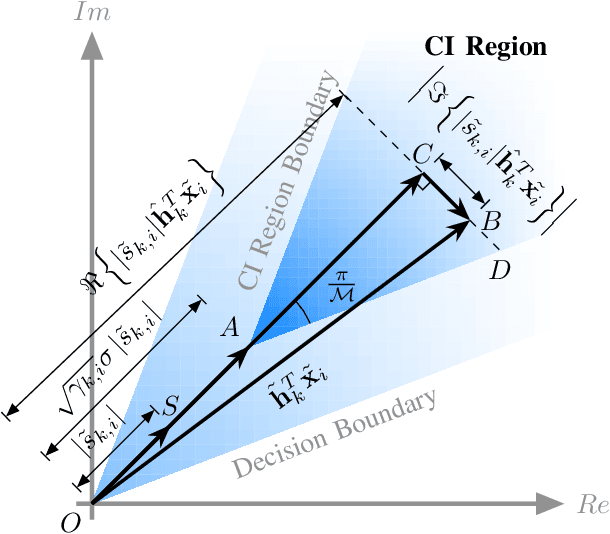
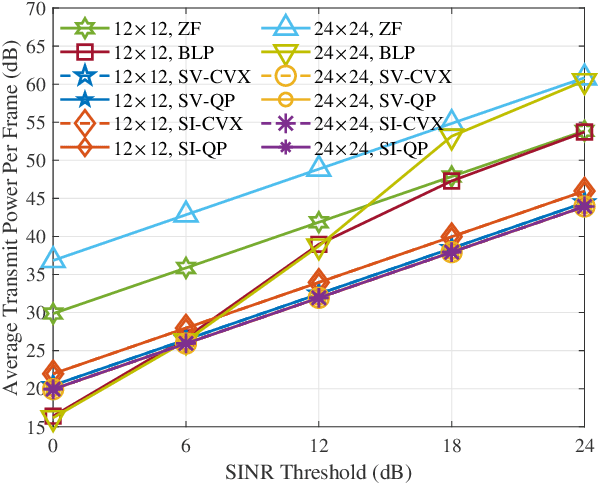
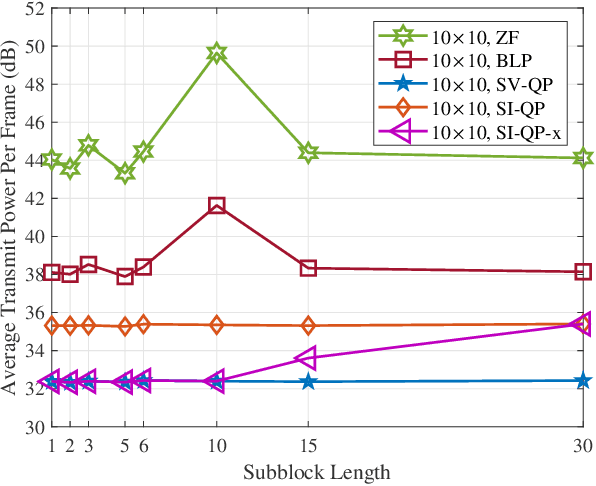
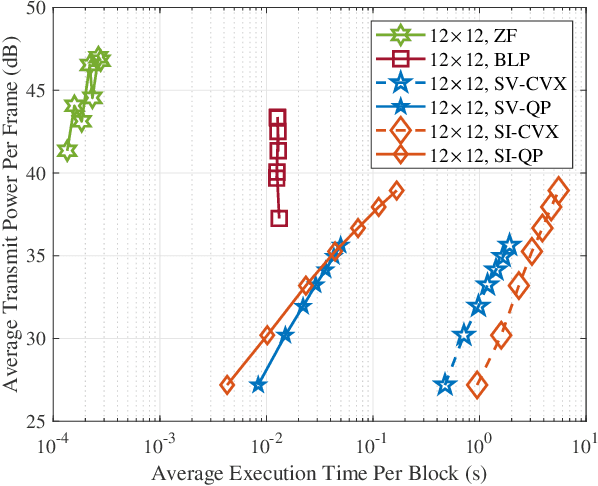
Abstract:This paper investigates block-level interference exploitation (IE) precoding for multi-user multiple-input single-output (MU-MISO) downlink systems. To overcome the need for symbol-level IE precoding to frequently update the precoding matrix, we propose to jointly optimize all the precoders or transmit signals within a transmission block. The resultant precoders only need to be updated once per block, and while not necessarily constant over all the symbol slots, we refer to the technique as block-level slot-variant IE precoding. Through a careful examination of the optimal structure and the explicit duality inherent in block-level power minimization (PM) and signal-to-interference-plus-noise ratio (SINR) balancing (SB) problems, we discover that the joint optimization can be decomposed into subproblems with smaller variable sizes. As a step further, we propose block-level slot-invariant IE precoding by adding a structural constraint on the slot-variant IE precoding to maintain a constant precoder throughout the block. A novel linear precoder for IE is further presented, and we prove that the proposed slot-variant and slot-invariant IE precoding share an identical solution when the number of symbol slots does not exceed the number of users. Numerical simulations demonstrate that the proposed precoders achieve a significant complexity reduction compared against benchmark schemes, without sacrificing performance.
Speeding-up Symbol-Level Precoding Using Separable and Dual Optimizations
Nov 27, 2022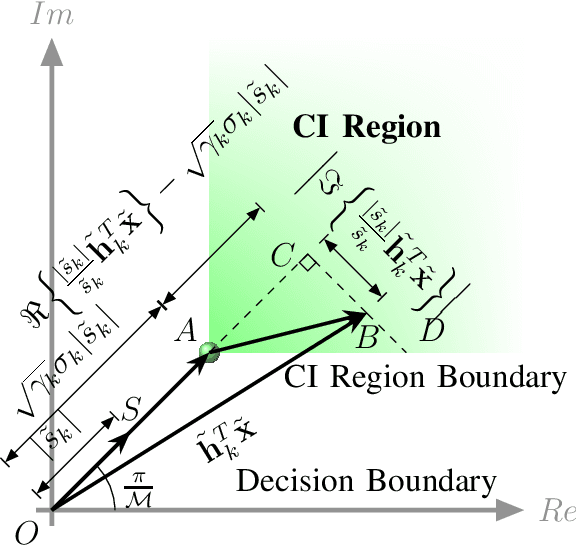
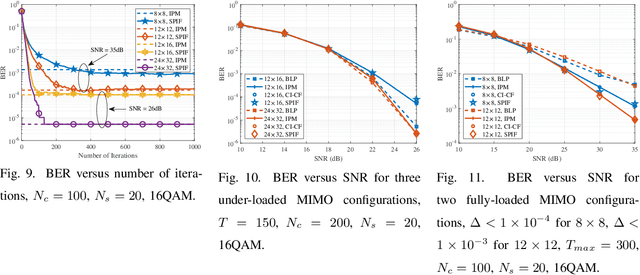
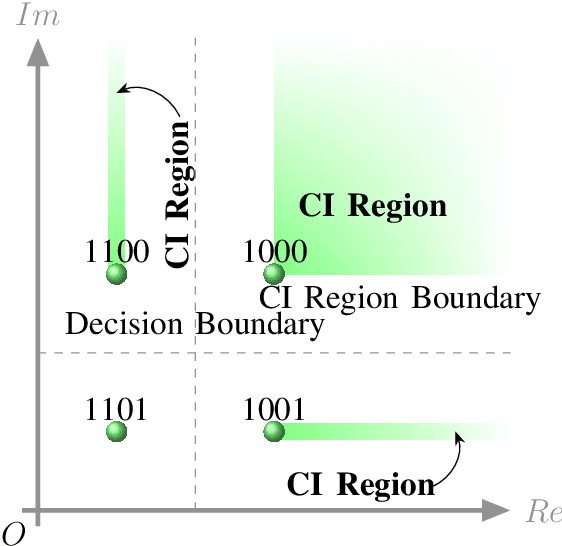
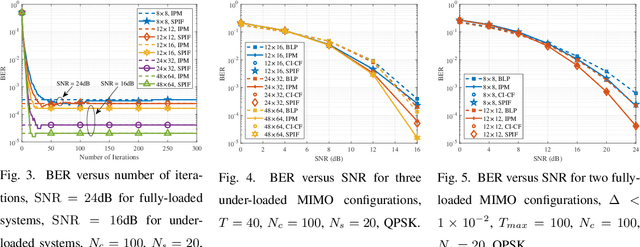
Abstract:Symbol-level precoding (SLP) manipulates the transmitted signals to accurately exploit the multi-user interference (MUI) in the multi-user downlink. This enables that all the resultant interference contributes to correct detection, which is the so-called constructive interference (CI). Its performance superiority comes at the cost of solving a nonlinear optimization problem on a symbol-by-symbol basis, for which the resulting complexity becomes prohibitive in realistic wireless communication systems. In this paper, we investigate low-complexity SLP algorithms for both phase-shift keying (PSK) and quadrature amplitude modulation (QAM). Specifically, we first prove that the max-min SINR balancing (SB) SLP problem for PSK signaling is not separable, which is contrary to the power minimization (PM) SLP problem, and accordingly, existing decomposition methods are not applicable. Next, we establish an explicit duality between the PM-SLP and SB-SLP problems for PSK modulation. The proposed duality facilitates obtaining the solution to the SB-SLP given the solution to the PM-SLP without the need for one-dimension search, and vice versa. We then propose a closed-form power scaling algorithm to solve the SB-SLP via PM-SLP to take advantage of the separability of the PM-SLP. As for QAM modulation, we convert the PM-SLP problem into a separable equivalent optimization problem, and decompose the new problem into several simple parallel subproblems with closed-form solutions, leveraging the proximal Jacobian alternating direction method of multipliers (PJ-ADMM). We further prove that the proposed duality can be generalized to the multi-level modulation case, based on which a power scaling parallel inverse-free algorithm is also proposed to solve the SB-SLP for QAM signaling. Numerical results show that the proposed algorithms offer optimal performance with lower complexity than the state-of-the-art.
Block-Level Interference Exploitation Precoding without Symbol-by-Symbol Optimization
Mar 23, 2022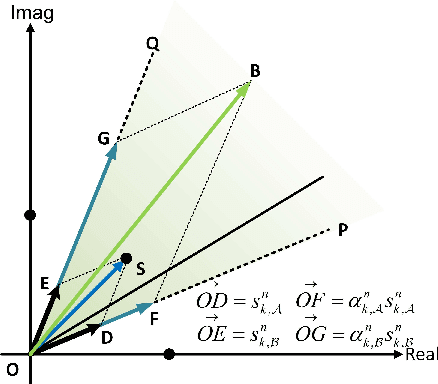


Abstract:Symbol-level precoding (SLP) based on the concept of constructive interference (CI) is shown to be superior to traditional block-level precoding (BLP), however at the cost of a symbol-by-symbol optimization during the precoding design. In this paper, we propose a CI-based block-level precoding (CI-BLP) scheme for the downlink transmission of a multi-user multiple-input single-output (MU-MISO) communication system, where we design a constant precoding matrix to a block of symbol slots to exploit CI for each symbol slot simultaneously. A single optimization problem is formulated to maximize the minimum CI effect over the entire block, thus reducing the computational cost of traditional SLP as the optimization problem only needs to be solved once per block. By leveraging the Karush-Kuhn-Tucker (KKT) conditions and the dual problem formulation, the original optimization problem is finally shown to be equivalent to a quadratic programming (QP) over a simplex. Numerical results validate our derivations and exhibit superior performance for the proposed CI-BLP scheme over traditional BLP and SLP methods, thanks to the relaxed block-level power constraint.
Practical Interference Exploitation Precoding without Symbol-by-Symbol Optimization: A Block-Level Approach
Mar 10, 2022
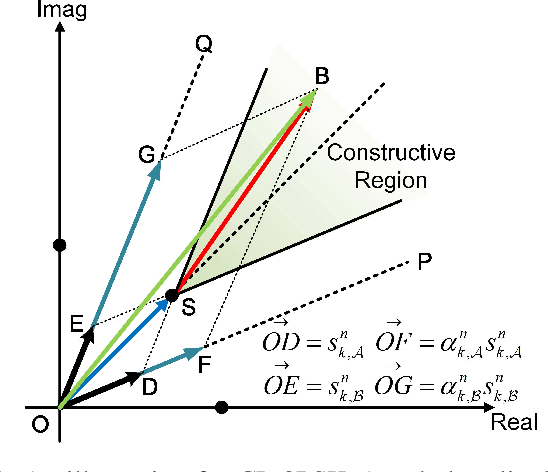
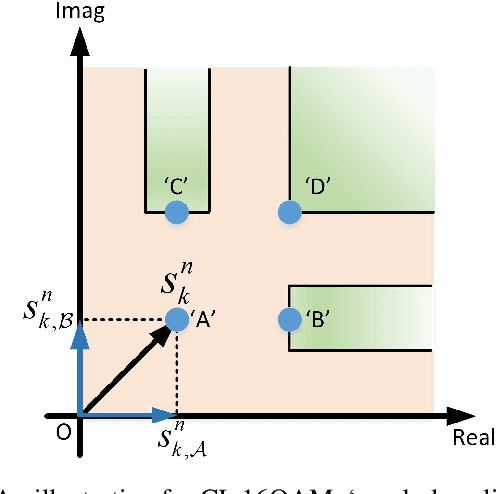
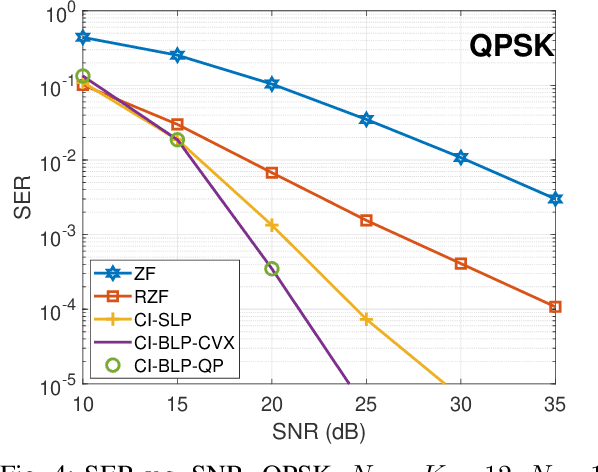
Abstract:In this paper, we propose a constructive interference (CI)-based block-level precoding (CI-BLP) approach for the downlink of a multi-user multiple-input single-output (MU-MISO) communication system. Contrary to existing CI precoding approaches which have to be designed on a symbol-by-symbol level, here a constant precoding matrix is applied to a block of symbol slots within a channel coherence interval, thus significantly reducing the computational costs over traditional CI-based symbol-level precoding (CI-SLP) as the CI-BLP optimization problem only needs to be solved once per block. For both PSK and QAM modulation, we formulate an optimization problem to maximize the minimum CI effect over the block subject to a block- rather than symbol-level power budget. We mathematically derive the optimal precoding matrix for CI-BLP as a function of the Lagrange multipliers in closed form. By formulating the dual problem, the original CI-BLP optimization problem is further shown to be equivalent to a quadratic programming (QP) optimization. Numerical results validate our derivations, and show that the proposed CI-BLP scheme achieves improved performance over the traditional CI-SLP method, thanks to the relaxed power constraint over the considered block of symbol slots.
 Add to Chrome
Add to Chrome Add to Firefox
Add to Firefox Add to Edge
Add to Edge